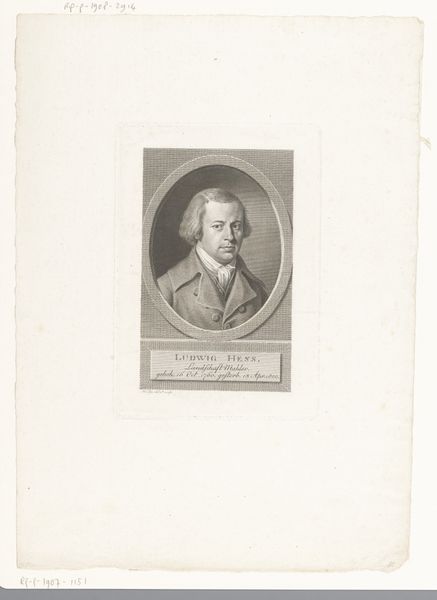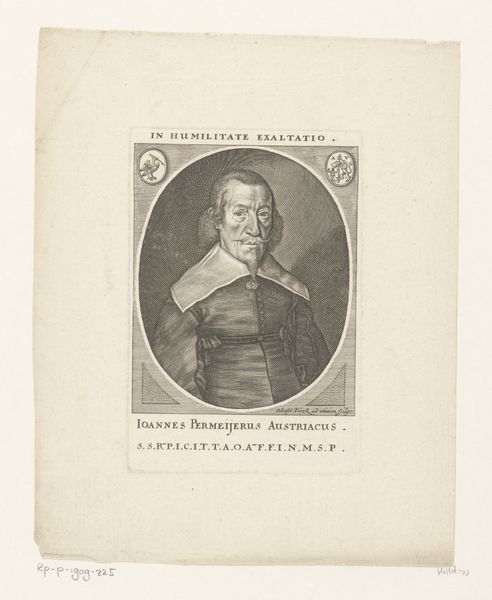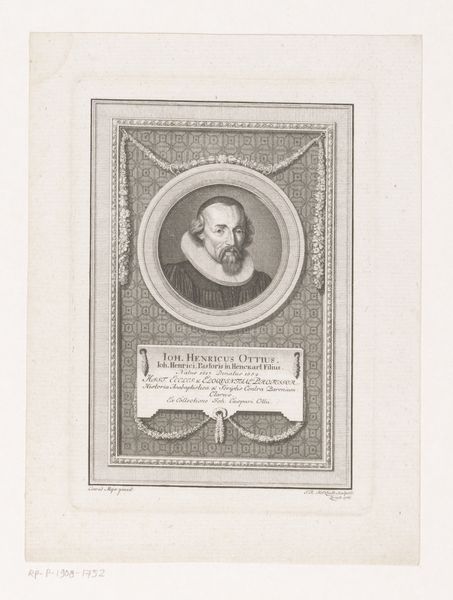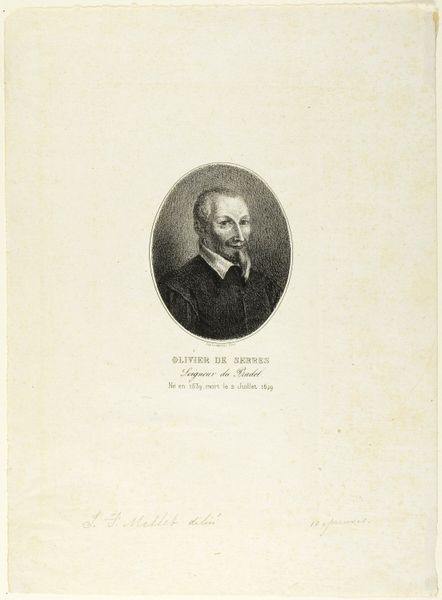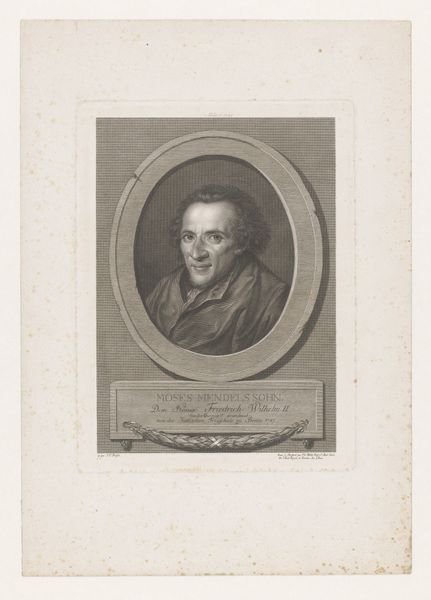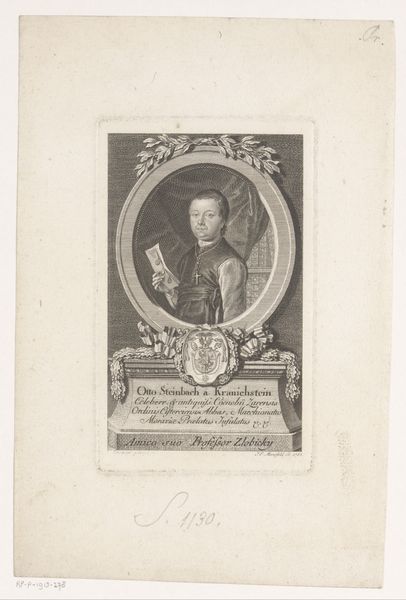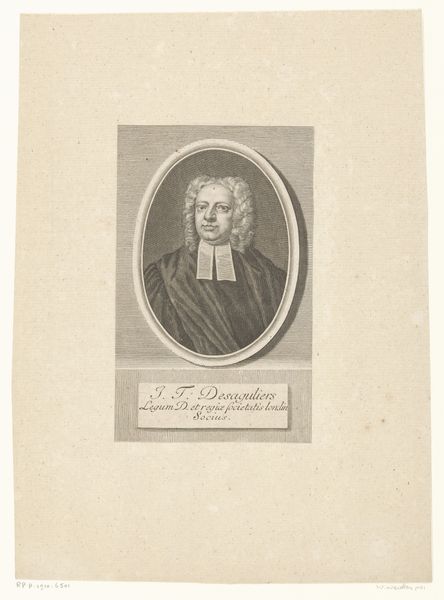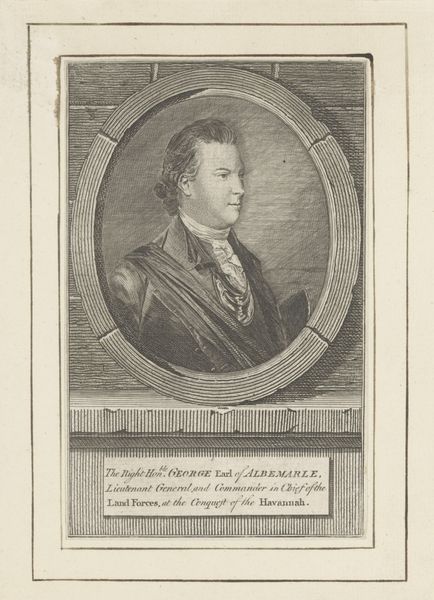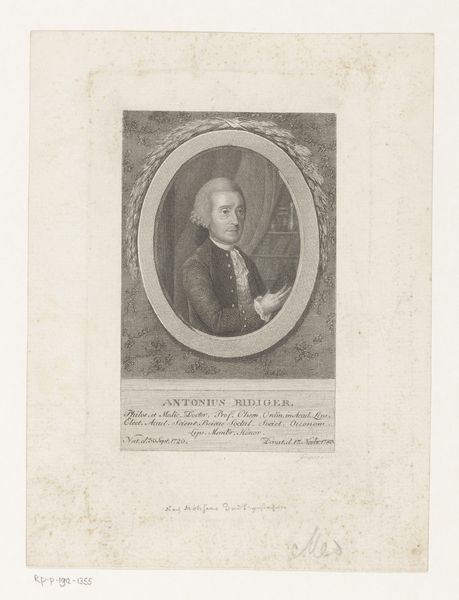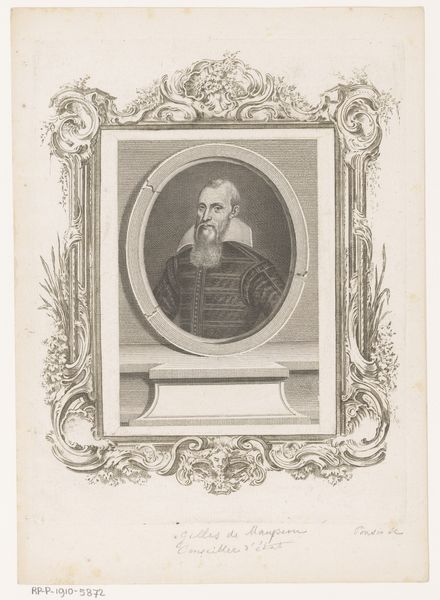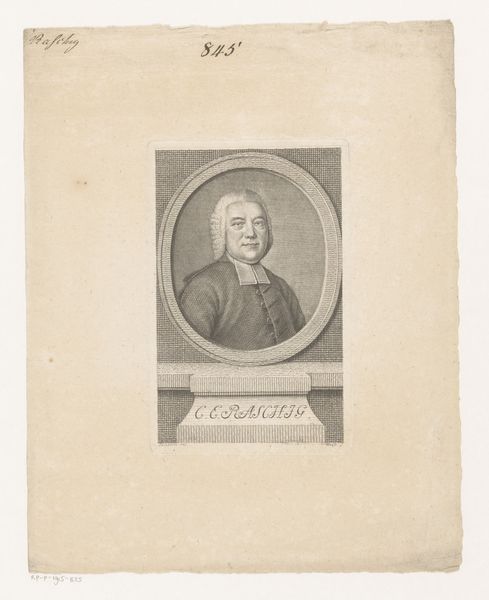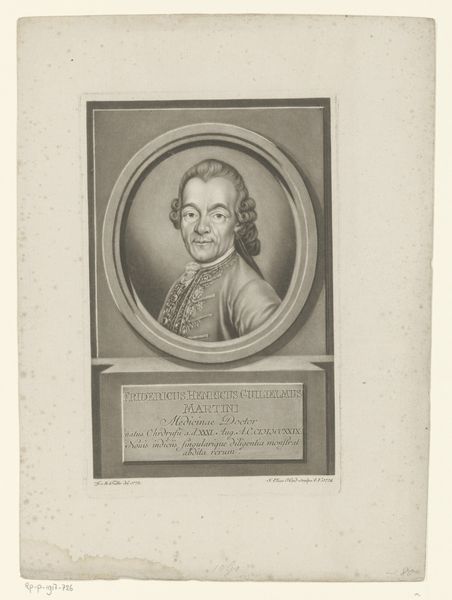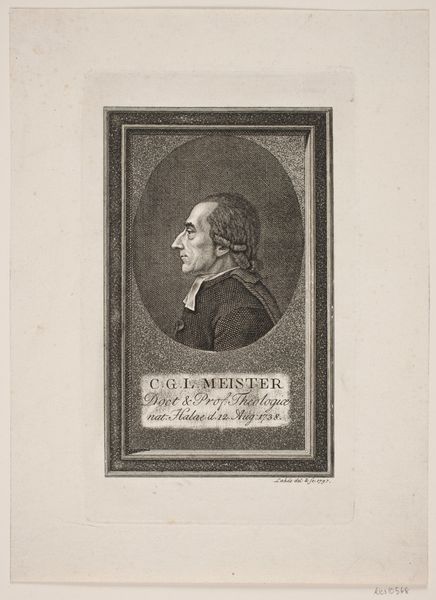
print, paper, engraving
#
portrait
# print
#
paper
#
academic-art
#
engraving
#
monochrome
Dimensions: height 196 mm, width 129 mm
Copyright: Rijks Museum: Open Domain
Curator: Let’s turn our attention to a monochrome engraving on paper from around 1793-1840, "Portret van Johannes Albertus Hoekstra", made by Leo Wolf. Editor: He has a serious face. Stark in its simplicity and the way it confronts us. The precision of the engraving renders this man's gaze with unnerving clarity; he appears resolute and… burdened? Curator: Observe how the engraver, Wolf, used fine lines to define the planes of Hoekstra's face. Note also the oval frame; a conventional pictorial device indicating status. This tightly controlled image directs the eye to Hoekstra himself, centralizing the figure and producing clarity in a formal sense. Editor: While Wolf employs the visual language of 18th-century respectability to monumentalize this figure, look closer at the inscription below the portrait. Hoekstra's positions of social significance suggest his political leanings. The inscription below his image speaks of his connections to religious and learned societies, pinpointing the crucial relationships between theology, philosophy and socio-political change. How does this inform our understanding of the man and the burden you alluded to earlier? Curator: Your point highlights how artistic interpretation often intersects with broader social trends. Focusing on craft, I can see that this work testifies to Wolf's proficiency as an engraver. He captured a likeness using only line, shadow, and tonal variation. And I can see it even from the way his dark coat offsets his powdered hair; that creates a striking interplay of texture against what would likely be his somber role within religious society. Editor: I'm also intrigued by the role of engravings during this period as both a democratic tool of mass distribution and representation for elites. Wolf's piece serves not merely to commemorate a man's likeness, but also testifies the powerful role of individuals driving religious reform during a transformative era of enlightenment ideals challenging orthodoxy across Europe. It's also important to consider the legacy and political background influencing men like Hoekstra at the nexus of faith and modernization… Curator: It seems like the engraving is a gateway to historical narratives. Its stark features have inspired interpretations as boundless as history itself. Editor: Precisely; its impact persists far beyond surface analysis as our understanding and engagement with political upheaval grows ever sharper.
Comments
No comments
Be the first to comment and join the conversation on the ultimate creative platform.
